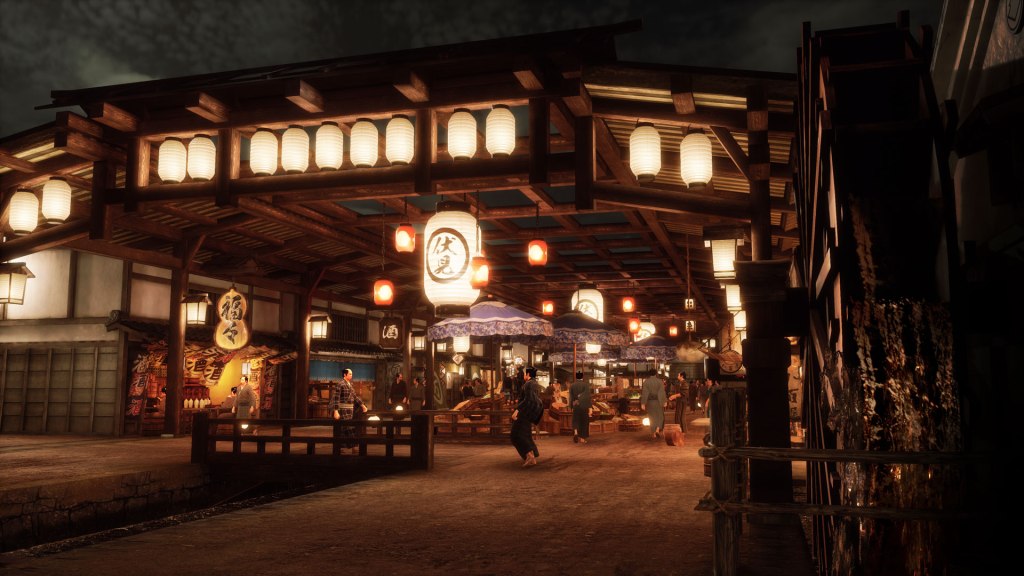One of the things that I think I’m always going to associate with COVID-19 pandemic and lockdowns that followed is the Yakuza/Like a Dragon series. I had purchased Yakuza 0 for sale years ago on PlayStation, but I didn’t start giving the series serious attention until I bought an Xbox Series console and had access to almost every entry in the franchise through Xbox Game Pass. I always knew that it was “something that I would be into,” but I just never set aside the time. Within a month of buying my Xbox Series S, though, I had a very serious case of COVID and was in lockdown with my family for two weeks. I didn’t require any hospitalization, but it was possibly the sickest I had ever been. I used my ample downtime during those weeks to get sucked into the series and over the course of the next two years I was slowly able to complete every single entry in the series, including the two Judgment titles.
With the release of Like a Dragon: Ishin!, I was able to play a Yakuza/LAD title as it released for the first time. I feel pretty comfortable in saying that, as a whole, the Like a Dragon series is likely my favorite ongoing series in video games currently for a myriad of reasons. The balance of very serious drama, goofy comedy, action-based gameplay mixed with detailed side content and minigames, all taking place in the detailed world that we’ve been given so much time to get to know just works for me. In the time since I started following the series, I was always fascinated by Ishin and wanted the chance to play it. At one point, I attempted to watch the game be played with fan subtitles on YouTube, but it just didn’t work. Now, though, I have the chance to play the game myself with its first Western release.
For future reference, since Sega has officially changed the name of the series to Like a Dragon in the west, I am going to try to stick with that nomenclature moving forward.
Unlike the base games in the series, which take place anywhere between the 1980s and the current day, Ishin takes place in a fictionalized Kyoto set in the 1860s. Of course, anyone who has seen material about this game can see that its cast is made up almost entirely of characters who look exactly like someone in a modern day Like a Dragon game. The game doesn’t really do anything to explain this, so the head cannon that I have developed is that the current day characters are acting in something like a film, or a stage play, and this game is an adaptation of it. Think of it as a modern-day Super Mario Bros. 3.
The game takes place at the end of the Edo period in Japanese history, something that I am not going to get into detail here because I will surely butcher something. Regardless, this game resulted in me spending a lot of time reading about this period of time in Japan on my own. Honestly, I feel like some things in the game are a little confusing if you don’t have some context about Japan’s history, but ultimately, I enjoyed taking it in.
The character of Kazuma Kiryu portrays Sakamoto Ryoma, a real-life figure from this period, who was tasked with investigating the operation of the Shinsengumi, an elite task force of swordsmen established by the military. Virtually every main character from the primary Like a Dragon series portrays a real-life historical figure in this game, and it’s always fun to spot some of them. Some of the characters are played by LAD characters that have died in the main series, so seeing them again was a good time. It also helped to cement the game as a spin-off of Like a Dragon, likely much more effectively than if they just used different actors to portray the characters.

Kyo, the fictionalized Kyoto the game takes place in, is overall a pretty solid environment, with lots of businesses, side quests, minigames, and so forth. However, there isn’t as much to do here as you expect more recent entries to have. Most of the minigames are things you don’t go out of your way to do more than once, unfortunately. Perhaps I’ve been spoiled by the games that have been released since Ishin initially came out as a PS4 launch window game, but it’s something worth noting considering westerners are coming into this after so many other titles under their belt.
Another way that this title can feel somewhat dated is in the combat, where it definitely feels like an entry from the PS3 period. There isn’t anything inherently wrong with that, but it is worth noting. The game, regardless, plays really well and the fusion of sword and gun-based combat is very enjoyable at times. There are four different fighting styles, but ultimately, I found myself playing exclusively with Wild Dancer, a frenzied use of both swords and guns, and the more traditional Swordsman style. Wild Dancer works well facing off against mobs of enemies, while the game expects you to lean on Swordsman for most boss battles.
The story hits on similar melodramatic beats that you’ve come to expect from a RGG Studios game, but the previously mentioned political intrigue raises the stakes of what you’re doing and makes the game feel important throughout.
Fans of this series have been eating well in recent years, and we will be doing even more in the coming weeks as Like a Dragon Gaiden: The Man Who Erased His Name and Like a Dragon: Infinite Wealth release in November and January, respectively.
As a piece of history in the Like a Dragon series, I’m glad that Ishin was able to get the western release it deserved. Despite the factors that age it quicker than more recent titles, it’s still very much worth a playthrough if you’re a fan.
3 Stars: Solid. A good game that does its job well.


Leave a comment